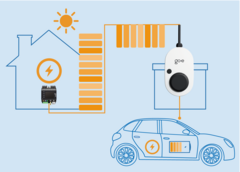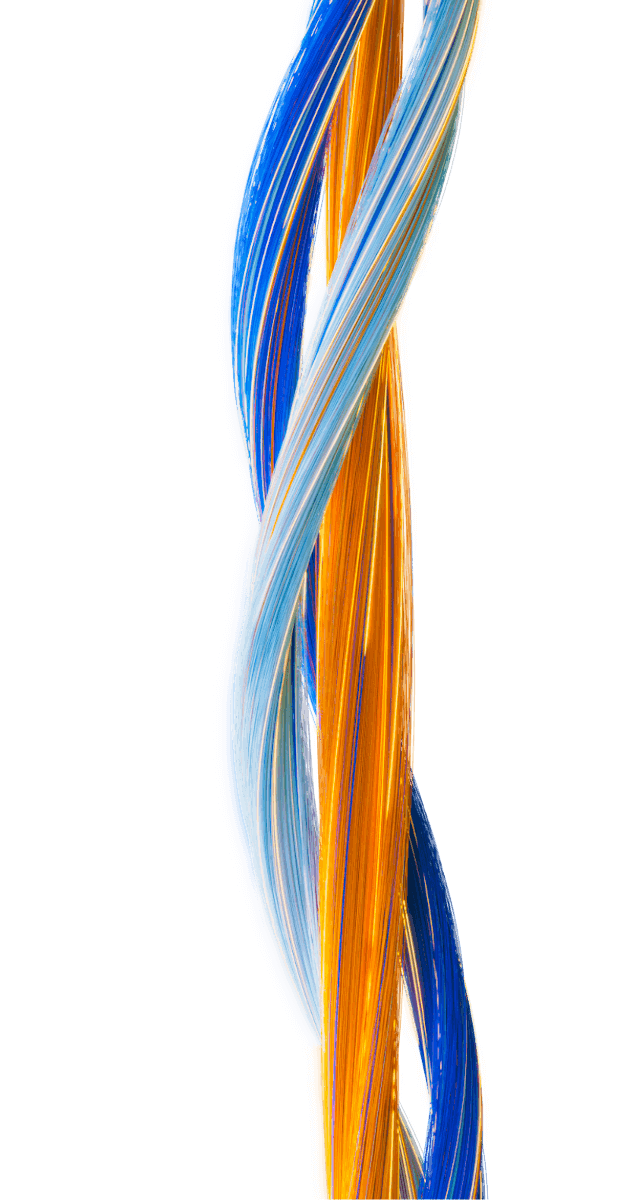PV Surplus Charging with the go-e Charger
Last updated:
Do you have excess solar energy that is not consumed by your house appliances? Try pv surplus charging. Send the excess power into your electric vehicle's battery and make your driving more cost-effective. This rooftop-to-battery charging approach will also minimise your carbon footprint. We call it surplus magic.
But can you take advantage of PV surplus charging with the go-e Charger? What do you need for it and how can you actually do it? You’ll know it all by the end of this article.
Two Methods of PV Surplus Charging with the go-e Charger
On warm sunny days, when the sky looks like a perfect sheet of blue paper and the sunlight is dazzling, you may find that some of the solar energy from your PV panels is not being used. Your fridge, dishwasher, air conditioning and TV are running on green energy, but there's still plenty of it. At that point, you can start transferring it to your electric car to take advantage of the excess charging from solar power.
If you have the go-e Charger, there are two ways in which you can enjoy excess PV charging.
1. Programmable PV surplus charging through open API
As you may have already figured out, the go-e Charger has an open API. This means advanced users can activate PV surplus charging through programming. The thing is, you need certain programming skills to make the inverter, Energy Management System (EMS) and charger communicate with each other. A different approach would be to use pre-programmed integrations like Solar Manager or GridX, but it's important to note that an EMS such as Solar Manager or the go-e Controller is still necessary.
2. Straightforward PV surplus charging with go-e Charger and go-e Controller
The go-e Controller uses surplus energy for optimum charging of your electric vehicle without the need to control the process yourself. You only need an electrician to install it. The rest is easy as a piece of cake!
Note: To make the most of solar energy regardless of the time of day or weather, you need to manually switch from a three-phase to a single-phase connection using an app or API.
Method 1. PV Surplus Charging with the open API of the go-e Charger
This is an approach for tech-savvy users or PV installers. You want to charge your electric car with surplus electricity? Connect the go-e Charger to an energy management system that has an open API like the go-e Charger. This energy management system enables communication between the charger and the PV inverter.
Here are some examples of compatible energy management systems with an open API: Home Assistant, ioBroker, openHAB, openWB, Loxone, Solar Manager, GridX or Alpiq.
Keep in mind that some systems (e.g. openHAB and ioBroker) require more advanced skills to use, while Loxone, for instance, is more intuitive.
When it comes to using these systems with the go-e Charger, you only need to enter some data, such as serial number and password, in the interface of the software to get started. So, if you know any of these software like the back of your hand, surplus PV charging through an open API will not be a problem for you.
The process is not too complicated. Yet, setting up the system requires programming skills. If you are not able to do this, you can get help from a solar specialist.
But why would you do it if there is a much easier way to charge with PV surplus energy…
Method 2. PV Surplus Charging with go-e Charger & go-e Controller - Easy as ABC
If you want to relish the ease of automatic PV excess charging, you need the go-e Charger and the go-e Controller.
The go-e Controller is an energy management system for electric cars that helps you use more solar power and less from the grid. It tracks the energy usage in your home and starts charging your car automatically as soon as there is excess power available. It automatically charges with one or three phases, depending on how much energy your solar panels are generating. Simply enter your preferences in the go-e app and let it do the magic.
Do you want to allow Integration of youtube videos?
Allows the playback of videos, that are hosted on youtube.com. By allowing this feature, you accept the privacy agreement of google.
The go-e Charger Gemini (flex) is a compact wallbox about the size of a shoebox. In this combo, it handles the charging process itself. Its safety features such as DC protection module, ground check for IT grid and phase and voltage testing ensure that your car battery is charged safely.
go-e Charger Gemini 11 kW
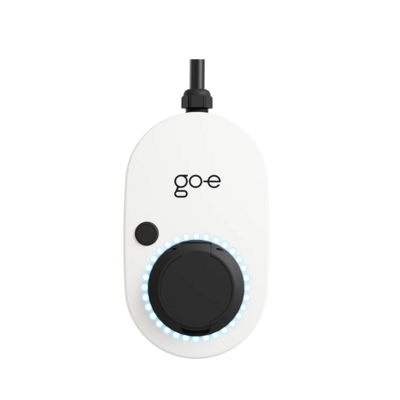
The compact wallbox for stationary use, at home or at the workplace. Simple installation, intuitive operation and smart comfort functions. Charging power from 1.4 kW to 11 kW. 1-phase or 3-phase charging.
go-e Charger Gemini 22 kW
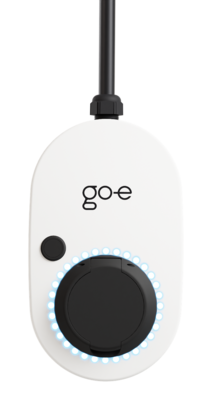
The compact wallbox for stationary use, at home or at the workplace. Simple installation, intuitive operation and smart comfort functions. Charging power from 1.4 kW to 22 kW. 1-phase or 3-phase charging.
go-e Charger Gemini flex 11 kW
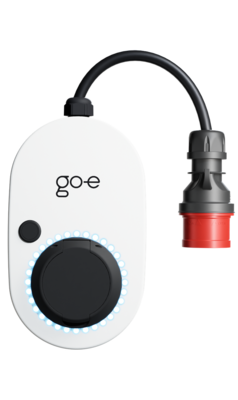
The intelligent wallbox can be used both stationary in the wall bracket and mobile. No electrician is required for the installation of the charging station. Charging power from 1.4 kW to 11 kW. 1-phase or 3-phase charging.
go-e Charger Gemini flex 22 kW
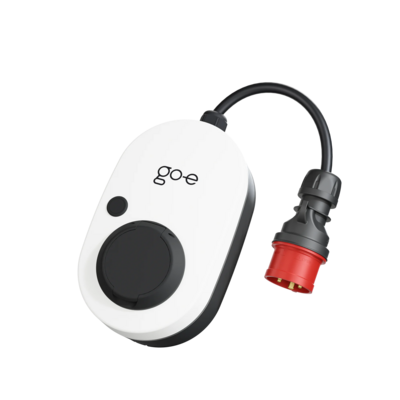
The intelligent wallbox can be used both stationary in the wall bracket and mobile. No electrician is required for the installation of the charging station. Charging power from 1.4 kW to 22 kW. 1-phase or 3-phase charging.
This solution offers a high degree of transparency. With the go-e Controller, you don't have to worry about losing money by feeding excess solar power back into the grid. It's smart enough to know when it's not worth it. If you still have some extra energy after powering your house electronics, the system will give priority to solar electricity for charging. To control the whole process, you can monitor the Controller’s actions whenever you want via the app or see it on the display.
Note: The go-e Controller works with all kinds of PV inverters and electricity storage solutions.
Summary
PV surplus charging with the go-e Charger is certainly possible. However, you have a choice to make. You can either use your programming skills to enable PV excess charging via the open API or simply combine the go-e Charger with the go-e Controller and start surplus solar charging with ease in the go-e app. When weighing your options, remember that in the first case, you need to switch the charging phases manually, and in the second case, it happens automatically.
Want to know more about what the go-e Controller can do? Check out our FAQs!
